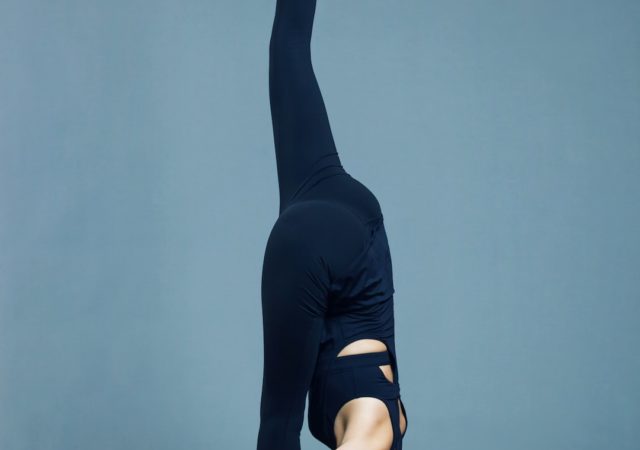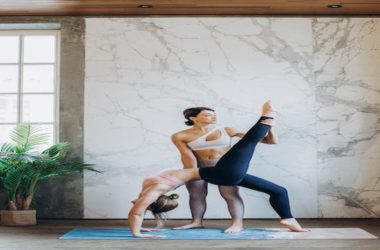Introduction
Yoga is a powerful practice that can have a profound impact on your physical, mental, and emotional health. For beginners, however, starting a yoga practice can be intimidating. It may seem like you need to know all the poses, own all the gear, and be able to twist yourself into a pretzel just to fit in. But the truth is, anyone can start a yoga practice at any level. With the right tips and tricks, you can make your yoga practice more accessible, comfortable, and enjoyable. In this article, we’ll explore some of the best tips and tricks for beginners who want to start a yoga practice.
Benefits of Yoga Practice for Physical and Mental Health
Before we dive into the tips and tricks, it’s worth highlighting some of the many benefits of practicing yoga. Yoga has been shown to improve overall physical fitness by increasing strength, flexibility, balance, and endurance. It can also reduce stress, anxiety, and depression, enhance mood and cognitive function, and improve cardiovascular health. Additionally, yoga has been used as a complementary therapy for a variety of medical conditions, including chronic pain, cancer, and autoimmune diseases.
Finding the Right Type of Yoga
One of the most intimidating aspects of starting a yoga practice is deciding which type of yoga is best for you. There are many different styles of yoga, each with its own focus and intensity level. Some of the most popular types of yoga include Hatha, Vinyasa, Iyengar, and Ashtanga. Hatha yoga is a gentle, basic style that is great for beginners. Vinyasa yoga is a more athletic style that links breath with movement. Iyengar yoga is focused on precise alignment and uses props like blocks and straps. Ashtanga yoga is a rigorous practice that follows a specific sequence of poses. To find the right type of yoga for you, try out a few different classes and see what feels most comfortable and enjoyable.
Preparing for Your First Class
Once you’ve found the right type of yoga, it’s important to prepare yourself for your first class. Make sure you wear comfortable, breathable clothing that allows you to move freely. Bring your own mat if possible, along with any props recommended by your teacher. In terms of nutrition and hydration, it’s best to avoid heavy meals before class, and drink plenty of water throughout the day to stay hydrated. Finally, try to mentally prepare yourself for class by setting an intention, visualizing success, and releasing any stress or tension you may be holding onto.
Basic Yoga Poses for Beginners
Now that you’re ready to start your practice, it’s time to learn some basic yoga poses. These poses are great for beginners and can be modified to fit different levels and abilities. One of the most foundational poses in yoga is downward-facing dog. This pose involves placing your hands and feet on the mat, hips high, and creating an inverted V-shape with your body. Another foundational pose is tree pose, which involves standing on one leg, lifting the other foot to the inner thigh, and placing your hands in prayer position. Warrior II is another popular pose that builds strength in the legs and core. To perform warrior II, stand with your feet wide apart, turn your right foot out, and bend your right knee, extending your arms out to the sides.
Tips for Practicing Yoga at Home
While attending classes can be a great way to learn and grow your practice, it’s also important to practice yoga at home. This can help you develop a sense of independence, self-awareness, and consistency in your practice. To practice yoga at home, try to create a comfortable and safe environment that is free from distractions. Use props like blocks and blankets to support your practice, and find a quiet space where you can clear your mind and focus on your breath. It’s also important to build a regular practice by setting aside time each day for yoga and setting realistic goals for yourself.
Overcoming Challenges and Sticking to Your Practice
As with any new habit, there will be challenges along the way that may test your commitment to your yoga practice. Some common challenges include feeling self-conscious, lacking motivation, or struggling with certain poses. To overcome these challenges, try to cultivate a sense of self-compassion and self-awareness. Recognize that your practice is unique to you, and that progress takes time. You can also find motivation by practicing with a friend or joining a yoga community. Finally, remember that consistency is key, so try to make yoga a part of your daily routine and stick to your goals over time.
Conclusion
Starting a yoga practice may seem daunting at first, but with the right tips and tricks, anyone can develop a meaningful, sustainable practice. By finding the right type of yoga, preparing yourself for class, learning basic poses, practicing at home, and overcoming challenges, you can develop a sense of calm, focus, and vitality that will stay with you for life. If you’re ready to try yoga for yourself, check out local studios, online classes, or yoga apps for a variety of resources that can support your practice.





